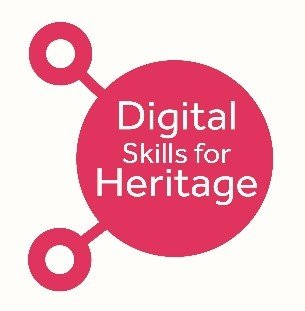Digitise my Dialogue
Here’s your how-to guide for preserving the legacy of an Interesting Woman.
Download your digitise my dialogue check list, and check out the tips and hints below!
Digitise my Dialogue checklist: Everything you need before, during and after your interview.
Useful documents
Depositing your digital dialogue with Sandwell Community History & Archives Services CHAS is the best way to make sure history is owned by the people who made it.
Scroll down for the agreement forms & documents you need to collect & deposit you digital dialogue with CHAS.
Click here for an Interview Participation Agreement pdf
Click here for an Interview Recording Agreement pdf
Click here for info on dealing with GDPR.
Is your digital dialogue legal & ethical? Click here
Click this CHAS recommended blog for cataloging archives in 4 easy steps.
“Provision of a catalogue and/or a comprehensive index is vital to allow future researchers to make use of your digital dialogue. It is advisable to work on the indexing while the material is being created rather than leaving it until later as it will be a massive task to undertake” Mary Bodfish. Create a catalogue using the link below to prevent your Digital Dialogue legacy from being lost.
Click to download a catalogue and index template pdf
Click here to download a digital dialogue CHAS deposit form
E mail/wetransfer your digital dialogue to: archives_service@sandwell.gov.uk
Capturing the best digital dialogue. Naomi St Juste and Sarah-Ann Cromwell.
Capturing the best digital dialogue
Imagine you are a journalist or Netflix director in 2182 and you want to recreate 2022 in your docuseries. What details would you need? What questions would you liked to have asked? In 2022 what could you ask to digitally capture how people feel post brexit, post pandemic, new war that will give future docuseries integrity and credibility?
The best digital dialogues come from relaxed people so guide the interview but let your interviewees drive it.
How?
Learning to listen-tops tips for a great oral history interview.
Personally invite your interviewee to take part
Meet them informally for a chat to explain the digital dialogue and afterwards let them do the talking.
Take notes of ideas, details & mindsets, specific dates & places, names & family members, interesting anecdotes & notice topics which make them smile or animated.
Use these notes to create questions which will guide your interviewees through their digital dialogue.
For the first question ask about the ‘thing’ that made them smile, it will help them to relax.
Send your interviewee the questions in advance.
Ask them to choose where, when and how they would like to chat and record.
Send photos of your digital equipment and how it will be set up or used.
Be sure to have all agreement and consent forms signed.
BBC sound technician tip: Help familiarise your interviewees with the tech by inviting them into the recording space for a brew and a chat 10 minutes before you hit record.
Set all phones to do not disturb or silent.
Have drinking water to hand for dry throats and coughing.
Actively listen & embrace 10 seconds of silence/thinking time before you prompt.
Pause the dialogue for plane/car noises, squeaky doors, flushing etc
Enjoy the digital dialogue.
Spontaneous campfire dialogues are magical so have your agreement and consent forms on a device in your back pocket, just in case.
Digitise my Dialogue adding noise reduction in free open-source digital audio editor Audacity.
Digital dialogue tech - what you need
Harnessing the power of your mobile’s recording studio & free software.
We used: iPhone 12 & iPhone 6 voice memo, Rode VideoMic Me-L, Manfrotto twist & grip, Manfrotto mini tripod (discounted for Black Friday), Audacity free open-source digital audio editor & recording application software, Garage Band on mac & otter.ai for transcriptions.
Sandwell Talking News advise on making phone recordings indoors: Choose a quiet setting, ideally where there are plenty of soft furnishings, to avoid echo. Speak around twelve inches from the phone mic. Speak more or less directly at the device being used.
How to record audio with iPhone youtube
How to send your iPhone voice memos to GarageBand youtube
Samsung voice recorder-How it works-what you need to know youtube
The Digitise My Dialogue, Bearwood Interesting Women project is supported by The Audience Agency’s Digitally Democratising Archives project thanks to funding from DCMS and the National Lottery, as part of The National Lottery Heritage Fund’s, Digital Skills for Heritage initiative.
Except where noted and excluding company and organisation logos this work is shared under a Creative Commons Attribution 4.0 (CC BY 4.0) Licence. Please attribute as Bearwood Interesting Women (2022) by Sarah-Ann Cromwell Bearwood Community Hub is supported by The National Lottery Heritage Fund, licensed under CC BY 40.







